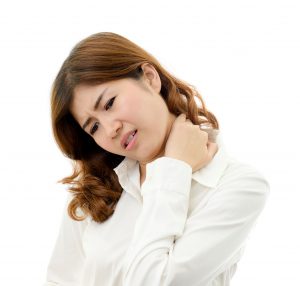Back Pain Woes for Women in their 20s
Back Pain Woes for Women in their 20s

Women in the UK are starting to suffer with back and neck pain at the tender age of 28, according to new research from the British Chiropractic Association.
Over a fifth (22%) of women who have struggled, or currently struggle with back or neck pain say they do so on a daily basis and a quarter (24%) have suffered for over 10 years. Men fare a little better – first battling back and neck pain from the age of 32.
Now, the BCA is urging women to take control and adopt healthier habits to prevent the onset of back pain, by incorporating a few simple steps into their daily routine.
The most common back or neck pain triggers for women are*:
- Lifting and carrying
- Bad posture
- Sleeping/ mattress
- Housework/ DIY
- Exercise/ sport/ physical activities
Housework / DIY and sleeping/ mattresses were more common triggers for women; while men were more likely to point to exercise as the cause of their back or neck pain. For both men and women lifting and carrying was the most common trigger.
Making just a few simple lifestyle changes can have a big impact on our back and neck health. The BCA has issued the following golden rules for protecting back health and preventing against the key pain triggers.
- Perfect your lifting and carrying technique: To avoid injury, make sure your legs are at least your hips’ width apart with the knees bent. Keep your head and shoulders directly above your waist and keep the weight you are carrying as close to you as possible – avoid twisting. Avoid bending from the waist, which increases the stress on your lower back. For more information on the perfect lifting and carrying technique, click here.
- Choose your bag wisely: Carrying heavy bags around all day can put strain on your back and contribute to pain. Make sure you regularly empty your bag and only pack the things you actually need. Ideally, opt for bags which can be carried on both shoulders, or across your body to distribute weight more evenly.
- Take regular breaks: When doing housework or DIY, make sure you vary your activity and try to spend no more than 20-30 minutes on any one thing. If painting, you can still take short breaks without causing a problem. Likewise, if using a ladder move it regularly, rather than leaving the ladder in one place and having to stretch or reach out. It is important to take breaks to avoid being in the same position for too long, and this will help relieve the build-up of tension in your lower back
- Stop the slouch: Slouching can put you at risk from back and neck pain. Relax when sitting into your seat, making sure you have your bottom against the seat back with your shoulder blades touching the back rest of the chair. Try to ensure that your hips are higher than your knees.
- Get a good night’s sleep: Recognise the warning signs that it’s time to change your mattress; you wake up feeling stiff or aching, your mattress is misshapen or sagging or you can feel individual springs. If your mattress is over seven years old, you might want to think about buying a new one.
- Warm up: When exercising or playing sport, it may seem obvious, but make sure your muscles are prepared by gradually increasing the intensity of your warm up, to avoid lack of flexibility and injury. A warm down may also help with those post exercise aches.
- Promote a good posture: Having and maintaining a good posture can help to keep back pain at bay. To promote a good posture, try incorporating some simple exercises into your daily routine.
The BCA has developed – Straighten Up UK – a series of simple exercises designed to improve posture and help prevent back pain by promoting balance, strength and flexibility in the spine

